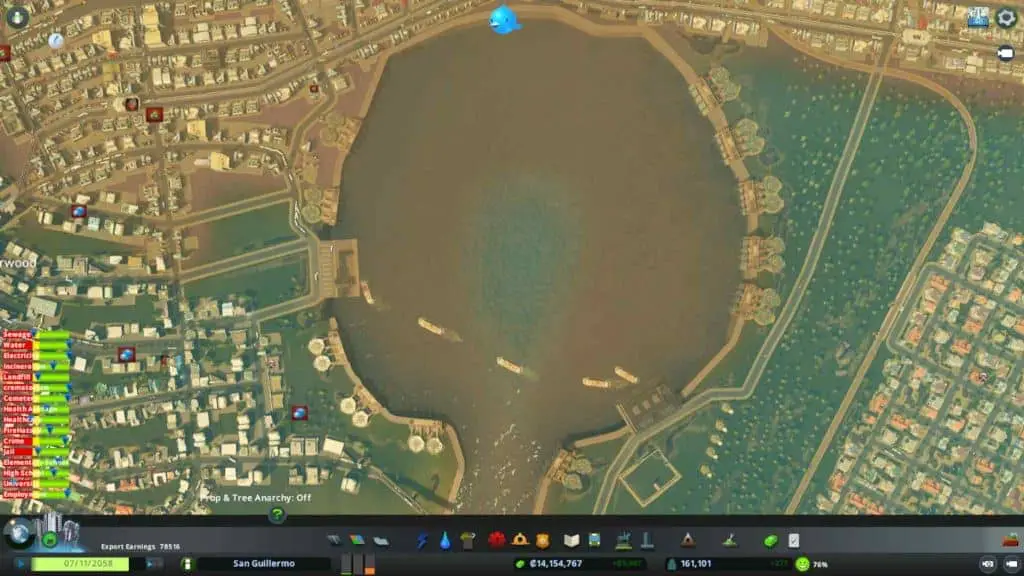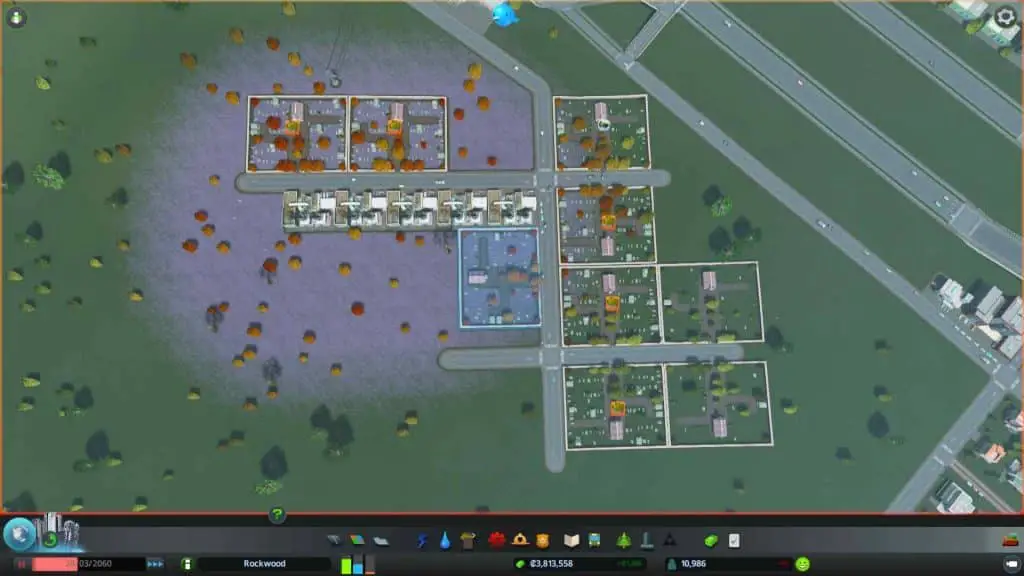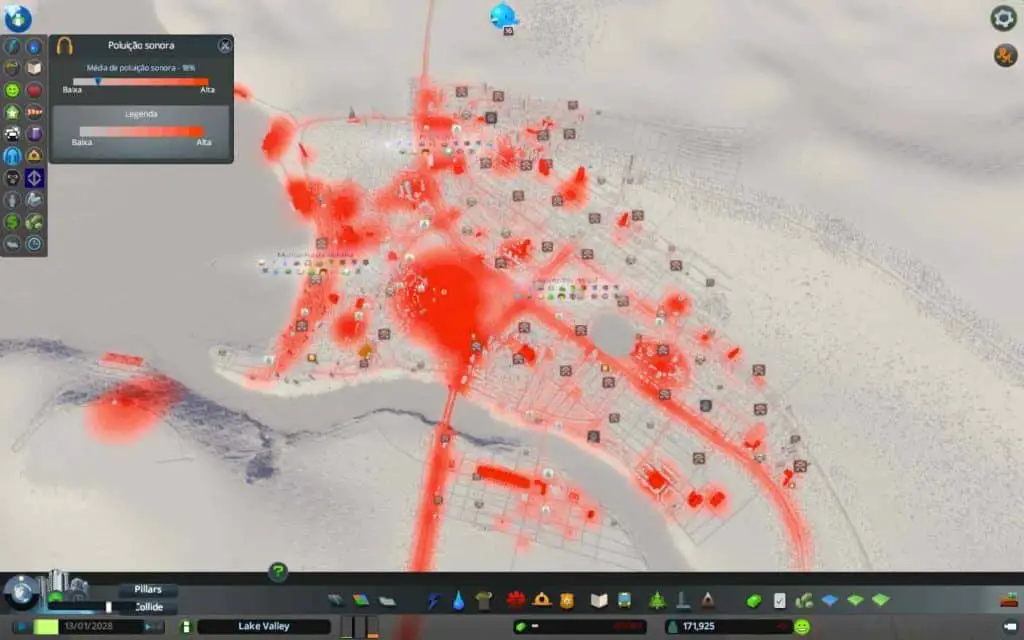This is something I have witnessed time and time again – the games going great, then all of a sudden, citizens in a certain area start getting sick. Then, once I think I have it all under control, the game proves me otherwise. So, what exactly makes citizens sick in cities: Skylines, and is there something we can do in order to prevent this?
Much like real life, citizens in a certain area may start to get sick, and when this happens, this usually means something is going on with the environment around them. Cities: Skylines is like real life, and in that retrospect, you just have to “think outside the box” or, per se, think like you would think if it were something going on in your city, in real life.
So, let’s take a look at what could cause your citizens in Cities: Skylines to be getting sick …
Also Read: What is the Most Efficient City Layout in Cities: Skylines?
Water Pollution

If you think about it, water pollution will make sense because nearly every building produces sewage. I’m going to assume you have a good water grid going on, the sewage causes no issues for the buildings, and it is being transported through the same pipes that have been bringing water into the city, straight to an outlet. Having pipes that contain both contaminated and clean water isn’t going to have a negative effect.
The pipes, however, should lead down to an outflow where the polluted sewage is being drained into a body of water. For this type of drainage, water drainpipes are the easiest option. The water downstream of the outflows, if you notice, will have a discolored look to this, this is an indication that nature has been polluted.
Having a pumping station that is poorly positioned can pump the polluted water back into the water network, and this will make citizens throughout your city sick. In order to avoid this problem, or to fix it so that your citizens can get better, you need to place the drainage pipes downstream of the pump stations.
Yes. The water treatment plants act a lot like water drainpipes, but they will eliminate 85% of the pollution that comes from the sewage before disposal. With that said, there will still be a tiny amount of pollution getting into the water, and you still shouldn’t use it as a source because it can make citizens sick.
Placing a Floating Garbage Collector will help filter the pollution from the bodies of water. In flowing rivers or other bodies of water, placing the garbage collection will help filter any water that passes over it.
Ground Pollution

Industry is the main cause of ground pollution. The forestry and farming industry specializations can’t be blamed for this one as they don’t cause ground pollution. However, Some of the Forestry Area and Farm Area buildings from the industries DLC will create pollution that can make your citizens sick.
Ground pollution can also be caused by other ground buildings, like incinerators and power stations. When pollution has occurred, the ground directly underneath the polluting buildings will be affected as well as an area surrounding those buildings. Even if you were to remove the source of the ground pollution, it is going to take some time for the ground to get back to normal.
If you have non-polluting buildings that have uncollected garbage for quite some time, they will pollute the ground. Sewage water is also responsible for ground pollution, especially near the treatment plant.
You will notice ground pollution when the ground is discolored. You need to make sure your residential zones aren’t overlapping with polluted grounds, as this can cause your citizens to get sick. The higher your pollution accumulation is, the faster your citizens in City: Skylines are going to get sick. By all means, keep the water towers away from these areas as the pollution will cause the water supply to become polluted, which will result in a city-wide health crisis.
Also Read: How Do The Budget Sliders Work In Cities: Skylines
Noise Pollution

Commercial zones, industry, traffic, and different buildings, such as power plants, tend to cause noise pollution. When you’re placing a building that produces noise, a circle is going to appear, which shows you the area that is affected by the noise pollution. For the road, the amount of traffic you have present on the road as well as the types of vehicles present will depend on the amount of noise pollution.
For example, large trucks tend to create more noise than cars, and electric cars are usually pretty quiet. To help reduce traffic noise, you can set policies encouraging electric cars and restricting large vehicles. Biofuel busses are much louder than the standard buses.
Roads with trees would be a great idea because those trees act as sound barriers, which will help reduce the noise produced by traffic. Elevated roads will increase noise pollution, while those roads under the ground won’t be noticeable.
You can look at the noise pollution info view, where you will discover the emitters of noise pollution and the areas that are impacted the most by it. Having a high level of noise pollution will rescue the land value as well as the happiness of your citizens. Those citizens who are being exposed to the most severe noise pollution will eventually get sick and die if you don’t fix the problem.
Conclusion
When citizens are affects by any of the pollution I just mentioned above, they will get sick, and in turn, this is going to make them unhappy. The sicker they become, the more of a chance they’re going to be in the hospital. While pollution has a major effect on citizens, it also has a big impact on land value, lowering it around the area that is polluted.
When you have sounds pollution being produced by the roads, you can lower it by upgrading the roads and adding some sound barriers. Placing office will help reduce the amount of sound pollution as well. Buildings that produce ground or noise pollution should be placed in an area separate from residential areas.



